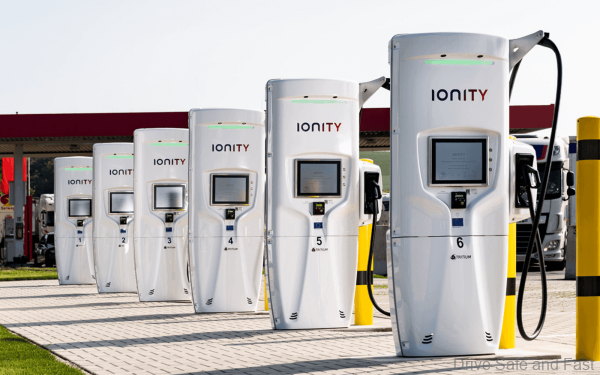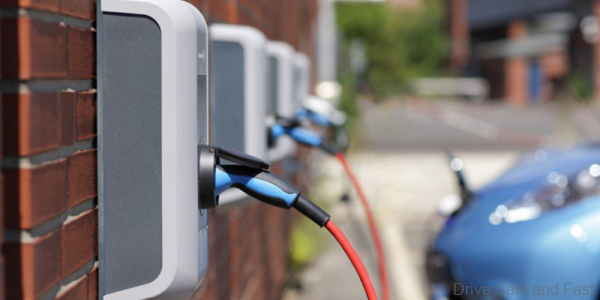Will Charging Infrastructure Limit The Electric Vehicle Progress
Anyone who buys an electric vehicle depends on reliable charging infrastructure – at home, at work and on the road.
Earlier this year, the ACEA issued a joint appeal with the European NGO Transport & Environment (T&E) and the European Consumer Organization (BEUC), calling for Europe to increase its speed and commitment into expanding charging and re-fuelling infrastructure.
Readers may be surprised to learn that an industry association and an environmental NGO are making common cause. We certainly have some critical discussions with our colleagues from T&E. We do not always share the same opinion and often take quite different positions, but we are united in our aim of making transport in Europe more climate-friendly.
We do not want the lack of charging and re-fuelling infrastructure to become a bottleneck for e-mobility.

Why this urgency? According to the European Commission, at least three million public car charging points will be needed by 2029 – including one million by 2024 – to meet the CO2 fleet targets agreed in 2019 for passenger cars and vans. Ten times more charging stations will be needed in private and work settings. This is the only way to ensure adequate access for the minimum of 30 million electric vehicles we expect to see on Europe’s roads by 2030 with the current targets.
According to data from the European Alternative Fuels Observatory, there are currently around 225,000 public charging points: 44,000 of those are in Germany. Even here, we would need to install 2,000 new public charging points a week, starting immediately. But during the whole of 2020, only 10,000 new charging points were added in Germany.

The issue of infrastructure remains entirely unsolved. Yet the European Commission is considering tightening passenger car fleet targets from -37.5 percent to -50 percent between 2021 and 2030, while the Green Deal aims to reduce overall CO2 emissions by 55 percent between 1990 and 2030.
The European automotive industry will continue its efforts in the fight against climate change. But one thing needs to be clear: if CO2 fleet targets are further tightened, the growing number of electric vehicles will also increase demand for infrastructure. For every percentage point the target is raised (including a corresponding increase of the benchmark level for zero and low emission vehicles), we will need at least another 200,000 public charging points – over and above the three million already needed by 2030.
For the more stringent limits under discussion, that adds up to more than 2.5 million more charging points. Who is going to guarantee that this number is available in time?
In addition, every electric car needs its own charging point either at a private residence or at a workplace. This is where the majority of charging occurs. Therefore, by 2030, at least 60 million charging points will be needed in private and public places.

A deal needs a binding commitment to implementation from all parties.
I see a “deal” as an agreement, with rights and obligations on all sides: an agreement with targets that must be attainable and everyone subscribes to, and which also requires a binding commitment to the arrangements decided on from all parties.
In the case of the Green Deal, this means any discussion of CO2 targets for vehicles must also include binding targets requiring the public sector in individual member states to build standardized charging infrastructure that is accessible to customers across Europe. This also applies to private and workplace charging points.
The framework conditions must be straightforward and un-bureaucratic – with no obstacles in the way of supplying electricity or billing processes. The expansion must be accompanied by regular and transparent reporting on progress made, including targeted fine-tuning to ensure synchronization between the growing number of electric vehicles and infrastructure.
Targeted incentives in individual member states are also necessary. Not because the industry has suddenly acquired a taste for additional regulation, but because, at the pace required for reducing CO2 in the transport sector, the Green Deal could otherwise quickly become a one-sided obligation that would render it ineffective.
Just as voters decide in a democracy, it is the customer who decides in a market economy. Any customer who is unable to charge their car is not going to buy an electric vehicle. In such a situation, Europe could easily squander its current advantage in electro mobility.
When it comes to implementing the Green Deal, the European automotive industry needs the right conditions to ensure its efforts do not go to waste. Until emission-free vehicles are suitable for all uses and all citizens, we need to drive progress in all drivetrain technologies and adhere to technology neutrality for an effective contribution to climate protection.
Ultimately, every gram of CO2 reduction has the same positive impact. And we want to continue providing mobility to citizens everywhere in the future, as conditions are not the same in all regions.
Electro mobility is redefining the rules of the game for everyone involved. Success is not just a question of supply and demand, but depends, above all else, on having the right infrastructure. Leveraging our full potential in Europe will allow us to occupy a leading position in sustainable mobility on the international stage. This will require a concerted effort from all of us.














